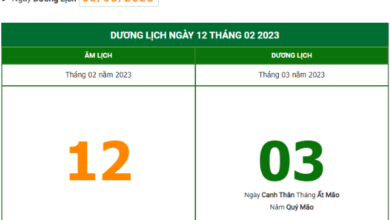Nurturing Little Hearts: Emotional Development for Preschoolers

Preschool years are a critical time for emotional development in children. During this formative stage, children begin to navigate a wide range of emotions and learn important skills for expressing, understanding, and managing their feelings. As caregivers, parents, and educators, it’s essential to create nurturing environments that support preschoolers’ emotional growth and well-being. In this article, we’ll explore the significance of emotional development for preschoolers and offer practical strategies for fostering healthy emotional development in young children.
Understanding Emotional Development
Emotional development encompasses a child’s ability to recognize, understand, and regulate their emotions effectively. It involves the development of skills such as self-awareness, empathy, social interaction, and coping with stress. Emotional development lays the foundation for healthy relationships, resilience, and overall well-being throughout life.
Emotional Milestones for Preschoolers
During the preschool years, children reach significant emotional milestones as they learn to navigate their feelings and interactions with others. Some common emotional milestones for preschoolers include:
- Identifying and Naming Emotions: Preschoolers begin to recognize and label basic emotions such as happiness, sadness, anger, fear, and excitement.
- Expressing Emotions: Children learn to express their emotions verbally and nonverbally through words, facial expressions, body language, and gestures.
- Understanding Others’ Emotions: Preschoolers develop empathy and the ability to recognize and respond to others’ emotions, perspectives, and needs.
- Regulating Emotions: Children learn strategies for managing and coping with strong emotions, such as taking deep breaths, using calming techniques, and seeking support from adults.
Importance of Emotional Development in Preschoolers
Emotional development plays a crucial role in every aspect of a preschooler’s life, influencing their social interactions, academic success, and overall well-being. Here are some reasons why nurturing emotional development in preschoolers is essential:
1. Social Skills and Relationships
Emotional development lays the foundation for positive social interactions and healthy relationships with peers and adults. Preschoolers who have strong emotional skills are better equipped to communicate their needs, resolve conflicts peacefully, and collaborate effectively with others.
2. Self-Regulation and Coping Skills
Emotional development helps preschoolers learn to regulate their emotions and cope with stress, frustration, and disappointment. Children who have developed effective coping skills are better able to adapt to new situations, handle challenges, and bounce back from setbacks.
3. Academic Readiness
Emotional development is closely linked to academic success and readiness for learning. Preschoolers who have strong emotional skills are better able to focus attention, engage in classroom activities, and participate actively in learning experiences.
4. Mental Health and Well-Being
Nurturing emotional development in preschoolers lays the groundwork for positive mental health and emotional well-being throughout life. Children who have strong emotional skills are less likely to experience anxiety, depression, and behavioral problems later in life.
Strategies for Fostering Emotional Development
As caregivers, parents, and educators, there are many ways we can support and nurture emotional development in preschoolers. Here are some practical strategies:
1. Create a Safe and Nurturing Environment
Provide preschoolers with a safe, supportive, and nurturing environment where they feel valued, respected, and accepted. Create predictable routines, clear expectations, and opportunities for positive social interactions.
2. Teach Emotional Literacy
Help preschoolers develop emotional literacy by teaching them to identify, label, and express their feelings. Use simple language and visual aids to help children recognize different emotions and understand their causes and consequences.
3. Model Healthy Emotional Expression
Be a positive role model for preschoolers by demonstrating healthy emotional expression and regulation. Share your own feelings and model appropriate ways to cope with stress, frustration, and disappointment.
4. Encourage Empathy and Perspective-Taking
Promote empathy and perspective-taking by encouraging preschoolers to consider others’ feelings, perspectives, and experiences. Use storytelling, role-playing, and discussion to help children understand and empathize with others’ emotions.
5. Foster Positive Relationships
Encourage positive relationships and social interactions among preschoolers by providing opportunities for cooperative play, group activities, and peer collaboration. Teach children to communicate assertively, resolve conflicts peacefully, and show kindness and compassion towards others.
6. Teach Coping Skills
Teach preschoolers effective coping skills for managing strong emotions, such as deep breathing, mindfulness, relaxation techniques, and positive self-talk. Encourage children to use these coping strategies when they feel overwhelmed or upset.
Conclusion
Nurturing emotional development in preschoolers is essential for their overall growth, well-being, and success in life. By creating supportive environments, teaching emotional literacy, modeling healthy emotional expression, and fostering positive relationships, caregivers, parents, and educators can help preschoolers develop essential emotional skills that will serve them well throughout life. Remember that every interaction, activity, and experience provides an opportunity to support and nurture preschoolers’ emotional development. With patience, compassion, and dedication, we can nurture little hearts and empower preschoolers to thrive emotionally, socially, and academically.



